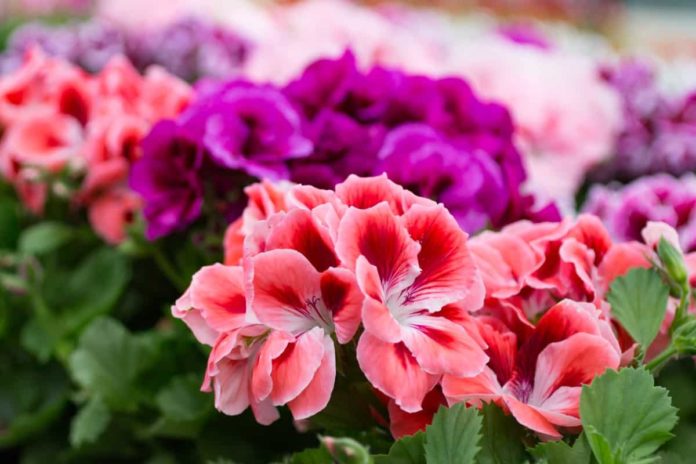A popular flower in Spain, geraniums can often be found in gardens as bedding plants, or grown indoors and outdoors in hanging baskets.
Easy to grow and colourful, geraniums emit a lovely scent, the striking flowers and shrubs being classified as evergreens and tender plants, thus making them a favourite houseplant.
Grown in a range of conditions and in colours, including pink, white, purple and blue, geraniums have an incredible array of flowers.
Requiring a well-drained potting mixture, geraniums do not like to sit in soggy, compact soil. Allow the soil to dry out in between waterings, then water thoroughly.
To establish maximum bloom, place the plants in an area where they will get around 4-6 hours of sunlight daily.
To encourage blooming, deadhead flowers regularly and to achieve bushiness and avoid legginess, pinch out stems.
During active growing months, fertilise every two weeks, using a water-soluble fertilizer at half strength. Don’t fertilise during the winter months.
There are many uses for the Geranium. The leaves of scented geraniums, along with all parts of the plant are safe to eat, with leaves and flowers most often used as scents and flavouring.
There are also medicinal uses, such as Geranium Essential oil, an anti-inflammatory and anti-septic agent, making it a beneficial ingredient for use in moisturisers that can treat skin ailments, including excessive oil, acne, eczema, dermatitis, and psoriasis.
The lemon geranium releases its smell when touched, and is deemed to work as a mosquito repellent.
Citronella leaves crushed and rubbed onto the skin are said to keep mosquitoes at bay, offended by its scent.






